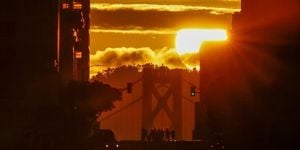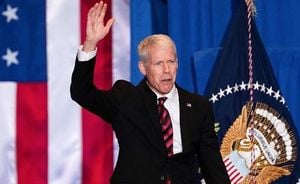As climate-induced disasters grow more frequent and severe, their impacts are being felt unevenly across the globe. In the United States, people of color—especially Black communities—face disproportionately high risks from such calamities, a reality that’s been thrown into stark relief by recent events. Meanwhile, Spain is currently battling its worst wildfire season on record, with deadly heatwaves and massive blazes forcing evacuations and straining emergency services. Both stories, while unfolding on different continents, illustrate the urgent need for more equitable and resilient approaches to disaster preparedness, response, and recovery.
According to a recent report highlighted by CNN on August 19, 2025, people of color in the US are at heightened risk of harm from climate disasters. This isn’t just a matter of geography or bad luck. The US Environmental Protection Agency’s Office of Atmospheric Programs found that minorities are most likely to live in areas projected to be hardest hit by climate change. The numbers are sobering: Black people are 40% more likely than non-African-Americans to reside in regions facing the highest projected increases in mortality rates due to extreme temperature changes. These disparities are rooted in a long history of socioeconomic and environmental injustice.
“Until we really address the root issues of climate injustice, we’re going to continue to see a disproportionate impact as it relates to disasters in Black and historically excluded communities,” Abre’ Conner, Director of Environmental and Climate Justice for the NAACP, told CNN. The consequences of these inequities are all too visible in places like Rolling Fork, Mississippi—a Black-majority rural town devastated by a severe tornado earlier this year. The storm killed 26 people and, nearly three weeks later, left about 500 residents—roughly a third of the town’s population—still displaced. The nearest tornado shelter was over 15 miles away, and many residents lived in mobile homes not built to withstand such extreme weather.
Racial disparities in disaster response aren’t new. After Hurricane Katrina, for example, Louisiana’s “Road Home” program distributed emergency funds based on appraised home values. Decades of discriminatory practices like redlining meant that homes in White neighborhoods were typically valued higher than those in Black neighborhoods, even when comparable. The result? Many Black families found themselves forced out of New Orleans, while White neighborhoods—often situated on higher, less flood-prone ground—fared better. “Poverty should not hinder survival from disasters. Being a person that is not White shouldn’t limit your survival,” said Chauncia Willis, CEO and founder of the Institute for Diversity and Inclusion in Emergency Management (I-DIEM).
The problem isn’t limited to the aftermath of disasters. A 2018 study by sociologists at Rice University and the University of Pittsburgh, cited by CNN, found that in counties suffering equal amounts of hazard damage, Black survivors’ average wealth decreased by $27,000, while White survivors’ average wealth increased by $126,000. The disparities are systemic, and the federal response has often lagged in addressing them. However, there are signs of progress. On January 20, 2021, President Biden signed Executive Order 13985 to advance racial equity and support for underserved communities across the federal government.
FEMA, under the leadership of Administrator Deanne Criswell, has simplified its eligibility process, expanded ways for survivors to verify home occupancy, and prioritized casework for vulnerable populations. According to FEMA spokesman Jeremy Edwards, these changes have allowed 124,000 survivors nationwide to access over $709 million in assistance they would previously have been denied. In Mississippi alone, FEMA has visited 1,400 homes in Sharkey County, interacted with over 2,400 survivors, and provided more than $5.4 million in aid since the tornadoes struck earlier this year. Yet, as Arthur DelaCruz, CEO of Team Rubicon, told CNN, “I think that in earnest they are trying to correct, but we can still do better in pushing to ensure these recoveries are equitable.”
Non-profit organizations are stepping up to fill the gaps. I-DIEM deploys equity response teams before and after disasters, helping local organizations integrate equity into disaster policy and practice. Team Rubicon uses tools like the CDC/ATSDR Social Vulnerability Index to identify and prioritize the most at-risk communities. The Center for Disaster Philanthropy directs funding to organizations supporting communities of color and works at the grassroots level, as seen in their ongoing efforts in Oklahoma City, which was severely affected by tornadoes in 2024. “We work really at the local grassroots level to get to know the community,” said Sally Ray from the Center for Disaster Philanthropy. “Our goal has always been to leave a community in a better place and be there for the long-term commitment.”
Willis of I-DIEM argues that the future of disaster management must be locally led, with community resilience hubs and training established before disaster strikes. “When people are not prioritized before a disaster, those same people will bear the brunt,” she said. The organization helps set up local facilities to support neighbors, coordinate communication, and provide emergency management training. It’s a pragmatic approach, rooted in the belief that those who know the community best are the ones best equipped to lead its recovery and resilience efforts.
Meanwhile, across the Atlantic, Spain is grappling with its own climate emergency. On August 19, 2025, Spanish Prime Minister Pedro Sanchez warned that the nation still faced “difficult hours” in its battle against wildfires, despite the arrival of cooler weather. Spain had just endured 16 days of scorching heat, with temperatures soaring above 40°C in many regions—a heatwave linked to as many as 1,149 excess deaths, mostly among people over 65 and those with existing health problems, according to the public health agency. Cooler, more humid air has given firefighters a slight edge in the country’s west, but officials caution that it could take weeks to fully extinguish the blazes.
The scale of devastation is staggering. The European Forest Fire Information System reports that 373,000 hectares have been scorched in Spain in 2025, making it the worst fire season since records began in 2006 and surpassing the 306,000 hectares burned in 2022. Fires have forced the evacuation of dozens of villages, closed roads, and suspended train service between Madrid and Galicia. Four people have died in Spain’s fires, with two more fatalities in neighboring Portugal. Many of the fires were sparked by lightning during dry storms, though arson is also suspected in some cases. The wildfires have released smoke and greenhouse gases over the Iberian Peninsula at levels not seen since 2003, according to the EU’s Copernicus Climate Change Service.
“We had to run away because the fire was coming in from everywhere—everywhere—above us, below us, all around,” Isidoro, an 83-year-old resident of Ourense in Galicia, told AFP. The fires have left lasting scars, both physical and emotional, on communities already struggling with the effects of climate change. Prime Minister Sanchez, visiting the affected Extremadura region, called for a “state pact to confront the climate emergency,” warning, “Every year the climate emergency worsens.”
As climate change accelerates, disasters like these are becoming more frequent, more intense, and more destructive. The stories from Mississippi and Spain are reminders that while nature may not discriminate, society often does. Building resilience—especially for the most vulnerable—will require not just better policies, but a commitment to equity, local leadership, and long-term investment. The work is urgent, and the stakes couldn’t be higher.



